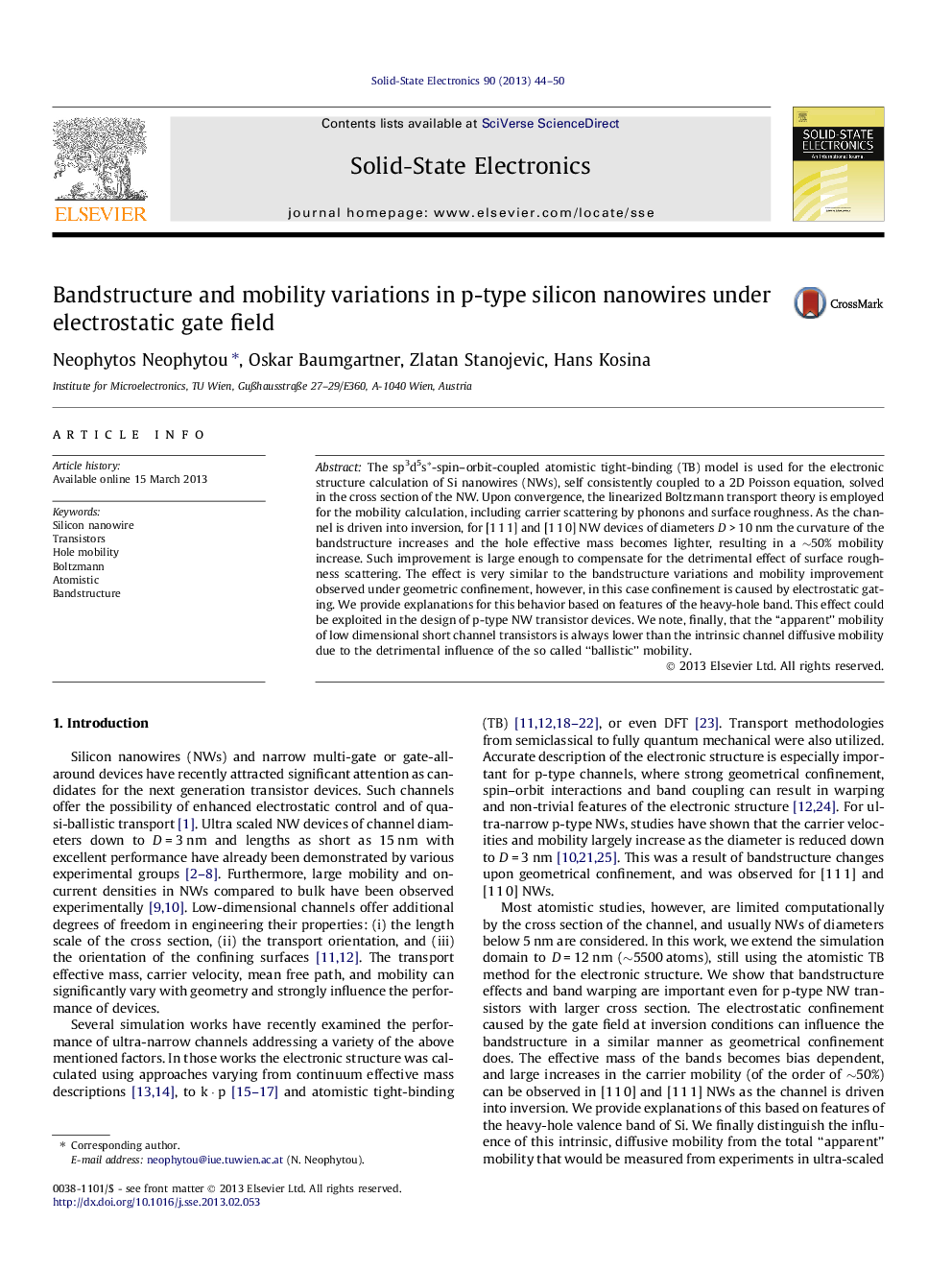| کد مقاله | کد نشریه | سال انتشار | مقاله انگلیسی | نسخه تمام متن |
|---|---|---|---|---|
| 746881 | 1462242 | 2013 | 7 صفحه PDF | دانلود رایگان |

The sp3d5s∗-spin–orbit-coupled atomistic tight-binding (TB) model is used for the electronic structure calculation of Si nanowires (NWs), self consistently coupled to a 2D Poisson equation, solved in the cross section of the NW. Upon convergence, the linearized Boltzmann transport theory is employed for the mobility calculation, including carrier scattering by phonons and surface roughness. As the channel is driven into inversion, for [1 1 1] and [1 1 0] NW devices of diameters D > 10 nm the curvature of the bandstructure increases and the hole effective mass becomes lighter, resulting in a ∼50% mobility increase. Such improvement is large enough to compensate for the detrimental effect of surface roughness scattering. The effect is very similar to the bandstructure variations and mobility improvement observed under geometric confinement, however, in this case confinement is caused by electrostatic gating. We provide explanations for this behavior based on features of the heavy-hole band. This effect could be exploited in the design of p-type NW transistor devices. We note, finally, that the “apparent” mobility of low dimensional short channel transistors is always lower than the intrinsic channel diffusive mobility due to the detrimental influence of the so called “ballistic” mobility.
► In this study we calculate low-field mobility in p-type silicon nanowires (NWs).
► We use the atomistic sp3d5s∗ tight-binding model and Boltzmann transport.
► In certain NWs, gating under inversion conditions increases the dispersion curvature.
► This effect results in gate-induced mobility increase for the [1 1 1] and [1 1 0] NWs.
► “Apparent” mobility in 1D NWs is low due to the influence of the “ballistic” mobility.
Journal: Solid-State Electronics - Volume 90, December 2013, Pages 44–50